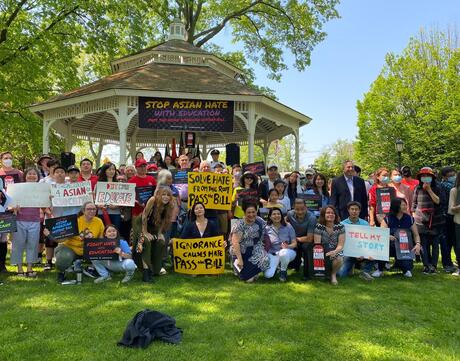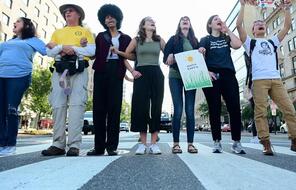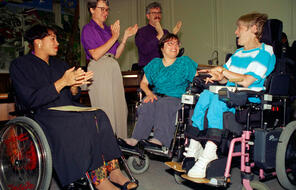
How Can People Promote Belonging in Their Communities?
Subject
- Advisory
- Social Studies
Grade
6–12Language
English — USPublished
Overview
About This Mini-Lesson
This is the fifth lesson in a five-part series on hate crimes and their impacts, created in partnership with the Office of the Prevention of Hate Crimes (OPHC), part of the New York City Mayor’s Office of Criminal Justice and the Mayor’s Community Affairs Unit.
One of the main impacts of hate crimes, as students have learned in the previous lessons, is that they make it more difficult for both the direct target and those who share—or are perceived as sharing—an aspect of their identity with hate crime victims to feel belonging and safety in their communities. In this lesson, students explore three examples of community initiatives that work to promote such belonging and safety, which can help to counteract some of the impacts that hate crimes have on people’s sense of community, belonging, and safety. Finally, students consider what actions they, their schools, or their communities can take to foster a greater sense of belonging for all.
Preparing to Teach
A Note to Teachers
Before teaching this mini-lesson, please review the following information to help guide your preparation process.
Activities
Activities
Materials and Downloads
Quick Downloads
Download the Files
How Can People Promote Belonging in Their Communities?
Unlimited Access to Learning. More Added Every Month.
Facing History & Ourselves is designed for educators who want to help students explore identity, think critically, grow emotionally, act ethically, and participate in civic life. It’s hard work, so we’ve developed some go-to professional learning opportunities to help you along the way.
Exploring ELA Text Selection with Julia Torres
On-Demand

Working for Justice, Equity and Civic Agency in Our Schools: A Conversation with Clint Smith
On-Demand

Centering Student Voices to Build Community and Agency
On-Demand














